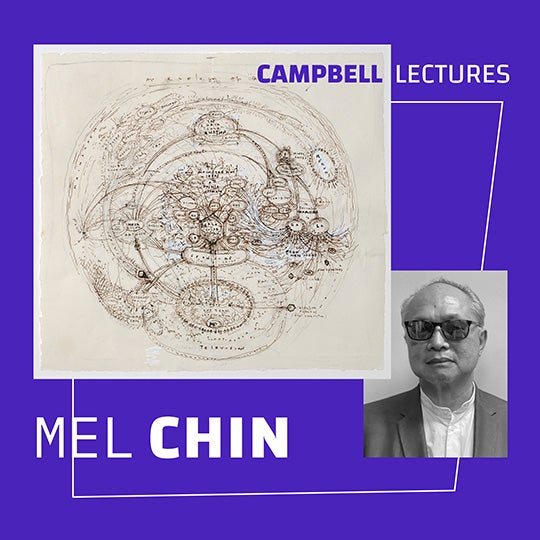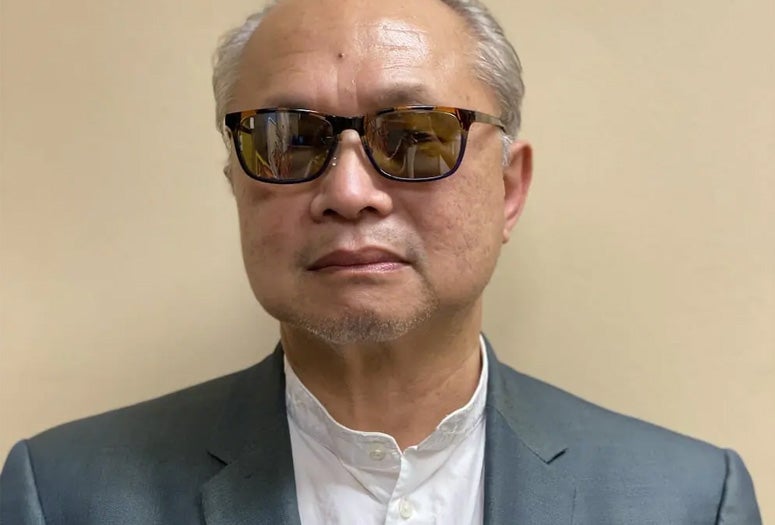Mel Chin, an internationally acclaimed conceptual artist and MacArthur Fellow, will bring his thought-provoking perspective to Rice University’s Campbell Lecture Series Nov. 12-13. Hosted by the School of Humanities, this year’s program offers a unique opportunity to hear from a visionary artist who defies conventions and challenges perceptions of art’s role in society. The lectures, which are free and open to the public, will be held at 6 p.m. each night in the Lois Chiles Studio Theater at the Moody Center for the Arts with a Zoom option available for remote attendees. Registration is required.

“Mel Chin’s work challenges us to reconsider the boundaries of art and its role in addressing some of society’s most pressing issues,” said Kathleen Canning, dean of humanities. “His ability to merge artistic expression with environmental and social activism makes him an ideal speaker for the Campbell Lecture Series, where we celebrate the intersection of creativity and critical thought.”
Born in Houston, Chin is returning to his hometown for a deeper exploration of his ideas and artistic journey.
“He’s an important artist to our city,” said Natasha Bowdoin, associate professor in art and associate dean of humanities for undergraduate programs and special projects. “Inviting him back to speak in a more in-depth way to his ideas and practice offers up space for a kind of homecoming, an opportunity to recognize and celebrate the significance of his work.”
Chin’s lectures promise to challenge and expand attendees’ understanding of art’s possibilities. On Nov. 12, he will present “Real Life Boogie: The Inadequate Metaphor vs. the Evolutionary Process,” in which he will explore the underlying themes and inspirations of his diverse body of work, ranging from dreams to covert missions, and how these influences contribute to his continuous evolution as an artist. The following night, his lecture “When the Going Gets Weird…” will focus on how his art is shaped by engagement with the world, showcasing lessons in reaction and resistance, where artistic efforts are not simply inspired but driven by a deeper compulsion to address social and environmental challenges.
“Mel Chin is a catalyst,” Bowdoin said. “There is a radical generosity to his work and practice. He makes it a mission to help create space in which others’ ideas can be realized. Much of his work is made in collaboration with students, other artists and thinkers — sometimes whole neighborhoods. I can’t think of a better or more important model to share with students, faculty and beyond.”
Chin’s body of work has always blurred boundaries between art, science and social advocacy. His pioneering project “Revival Field” introduced “green remediation” by using plants to extract toxic metals from soil, laying the groundwork for new possibilities in environmental art. His leadership of the GALA Committee from 1995-98 resulted in “In the Name of the Place,” a public art project that covertly inserted art into episodes of the 1990s TV show “Melrose Place.” He has also addressed global issues through creative initiatives like Fundred, a nationwide effort to combat childhood lead poisoning through art-making. His influence extends to the world of film with “9-11/9-11” winning the Pedro Sienna Award for Animation in Chile.
In 2018, Chin created a striking visual representation of the future with “Unmoored” and “Wake” in New York City’s Times Square, imagining a world transformed by rising sea levels. Simultaneously, the Queens Museum hosted a 40-year survey of his career, which was lauded by Hyperallergic as the best art exhibition of the year. These projects underscore the impact of Chin’s work, which is defined by a commitment to challenging the status quo and reimagining what art can achieve.
“I hope attendees take away from Mel’s talk a better and more expansive understanding of what art can do: the power it holds, the agency it creates, the connections it makes,” Bowdoin said.
She noted that Chin’s work exemplifies how art can unlock and make possible discovery in other fields like the sciences to address issues such as environmental catastrophe and to amplify social advocacy into a force for political change.
“Rather than playing a supporting role, a role art can often be miscast in, Mel’s work shows us what happens when other fields are held accountable to the rigor and expansiveness of an artist’s terms,” Bowdoin said.
Register to attend the Campbell Lecture Series here.

